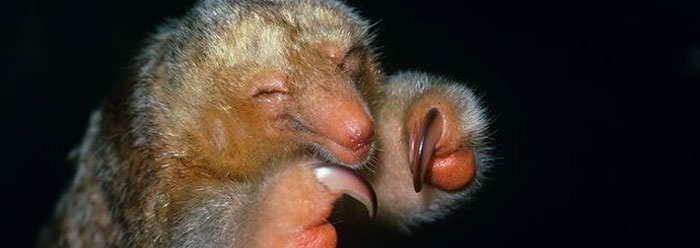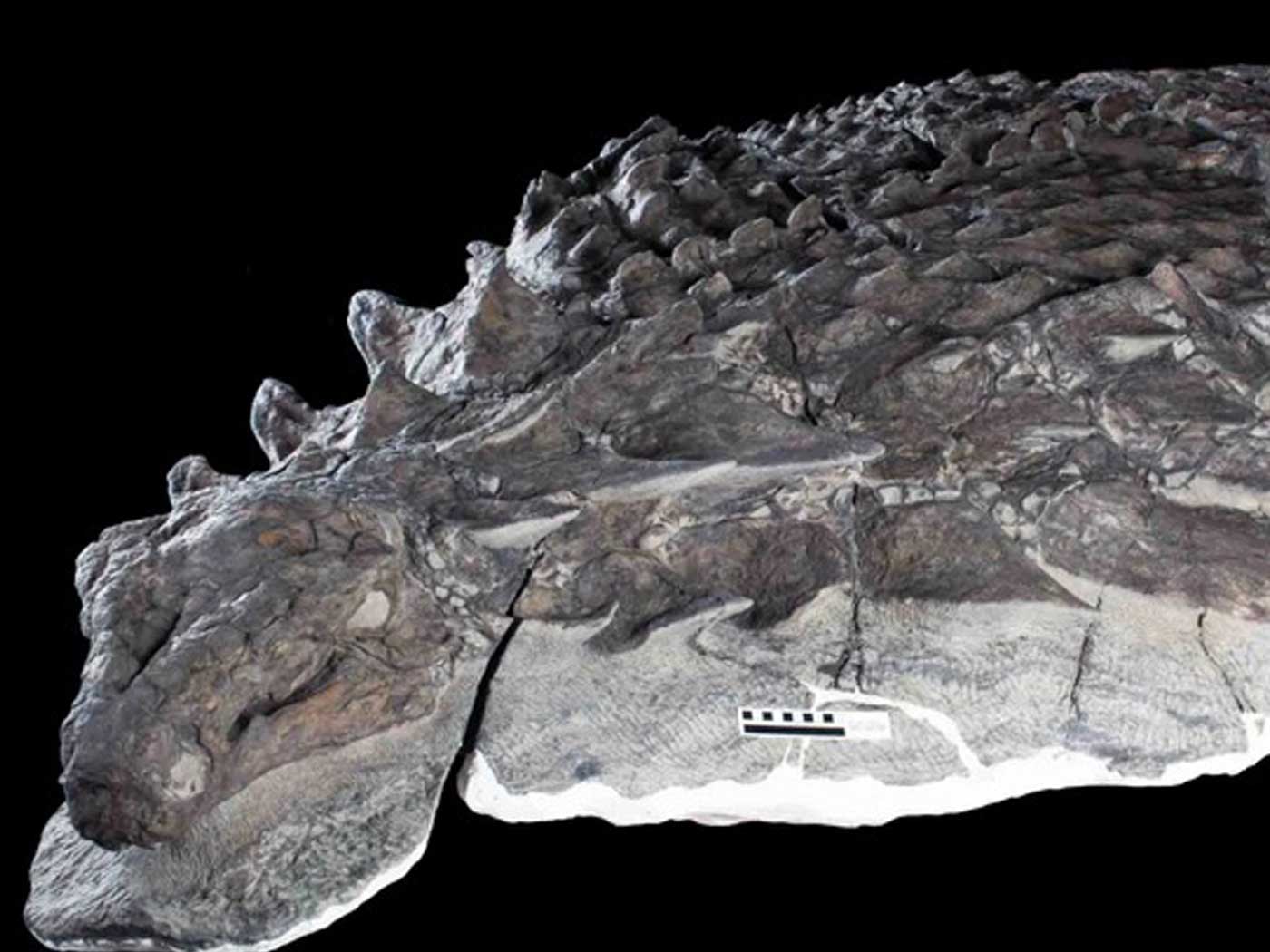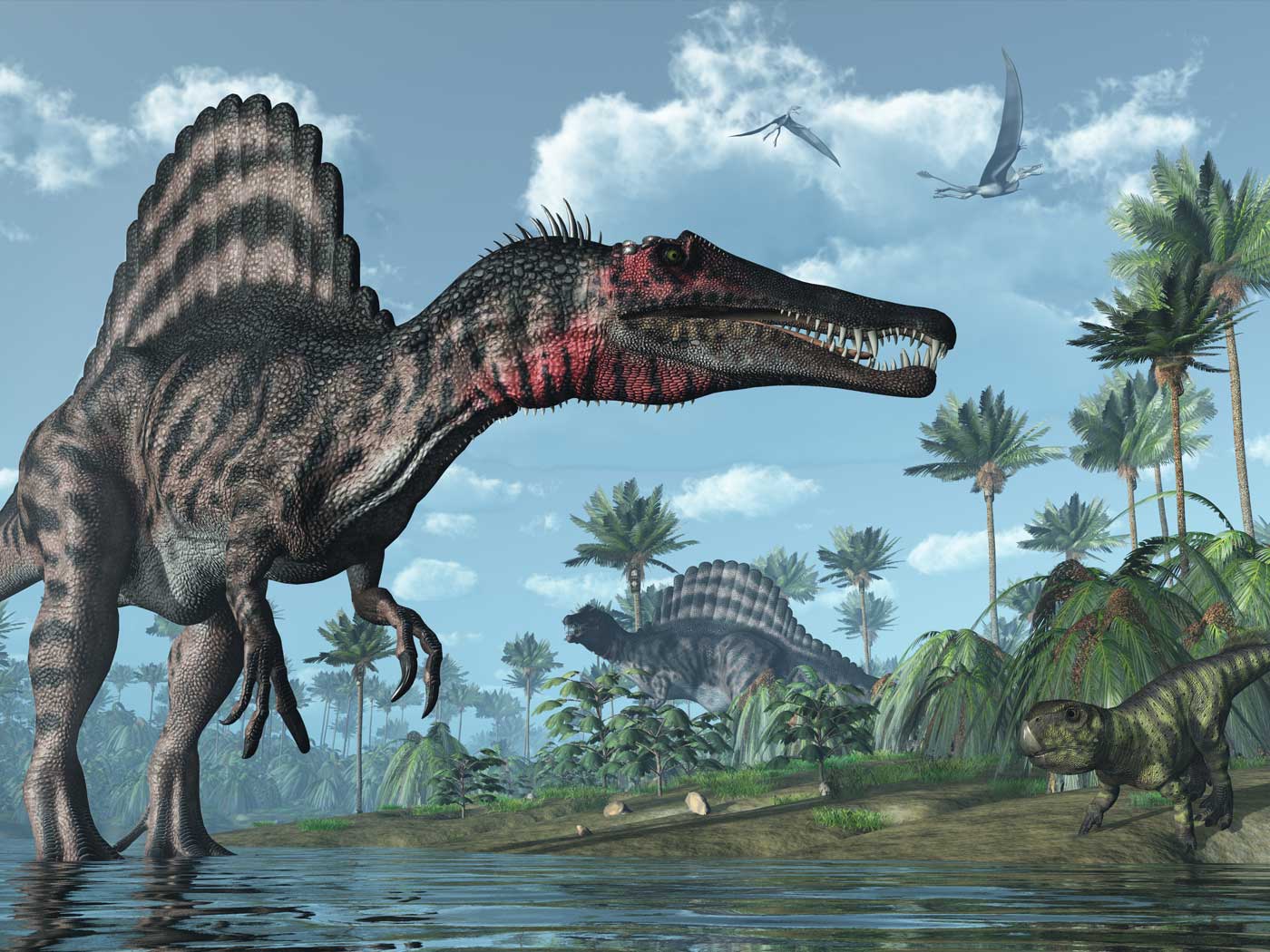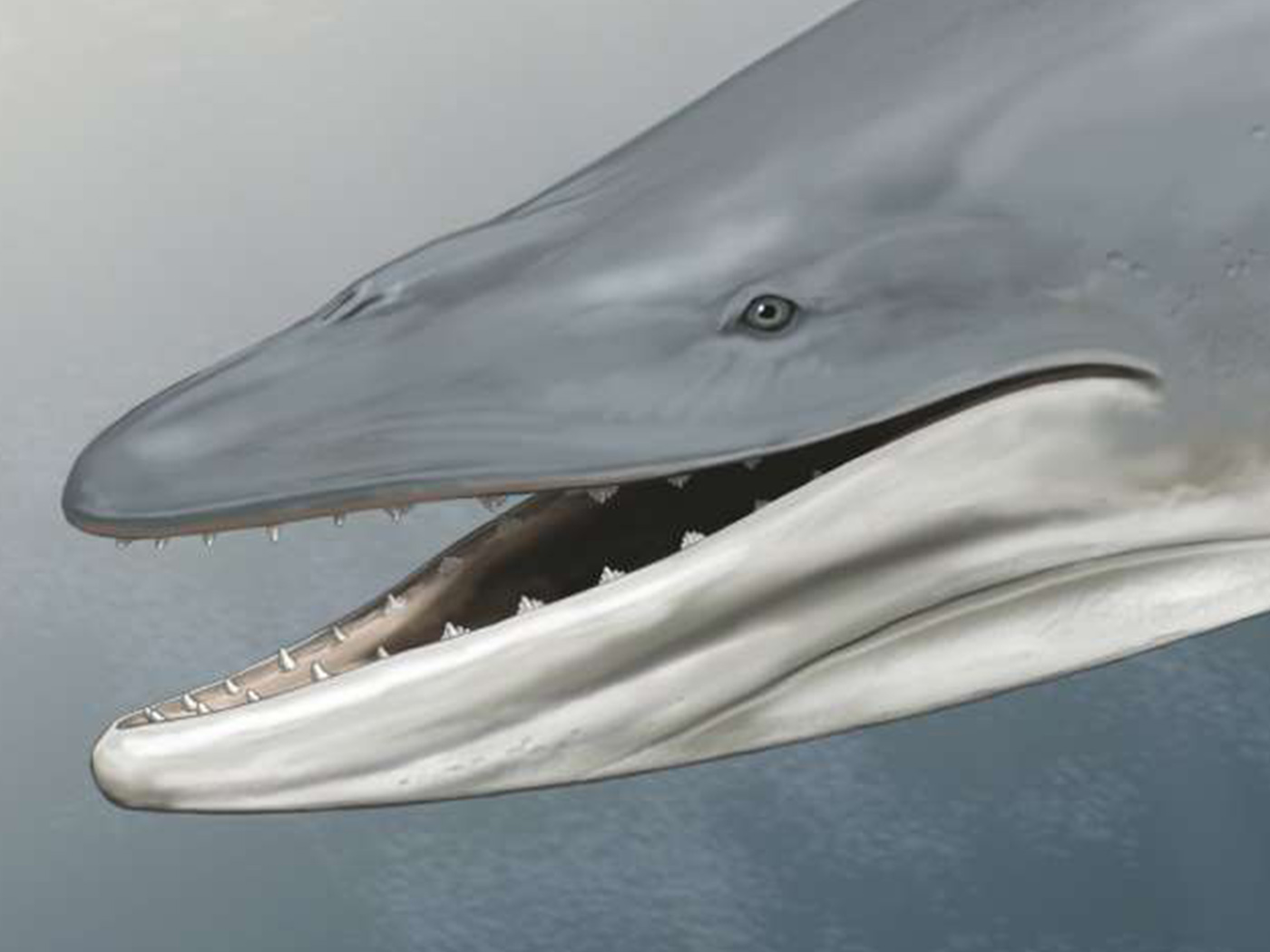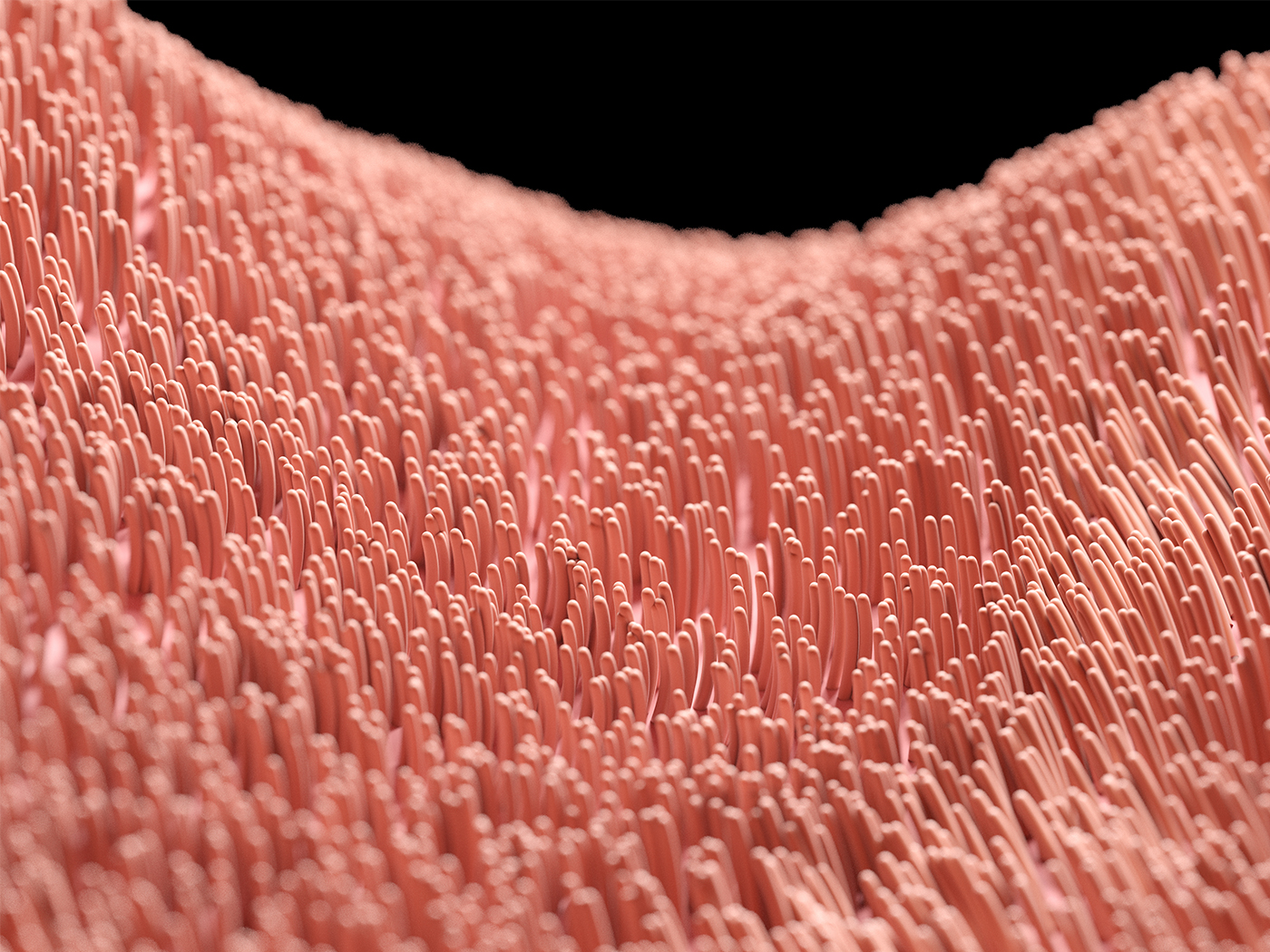Once upon a time, only a single Italian fossil—a crushed specimen that paleontologists had to reconstruct—represented the extinct reptile Drepanosaurus. Now, a team of American scientists including dinosaur, anatomy, and geology experts described a new Drepanosaurus specimen from Ghost Ranch, New Mexico in the technical journal Current Biology.1 Instead of fingers, it had a massive claw on each hand, and its curling tail was claw-tipped. These features have some secular scientists scratching their heads over where it came from and why it looks more like a particular living mammal than a reptile.
Though its name sounds like a dinosaur, this odd reptile found in Triassic layers wasn't exactly a dinosaur—or even a lizard. It was probably its own brand of reptile. Drepanosaurus' enormous front claw connected to a broad and flat bone found in no other animal. This specimen, and the few others like it, had a slender snout. Its long muscular tail could curl around tree branches, and it had a unique tail spike that could help anchor the animal onto tree bark. This extinct reptile likely lived in trees and scratched away bark to feed on insects.
The reptile's overall body shape—and especially those big front claws—best match that of the nocturnal and slow-moving silky anteater, also known as the pygmy anteater. About the size of a large squirrel, it scratches out a good living in South and Central American tropical trees.
Evolutionary dogma insists that creature features gradually shifted from one form to another. Proponents therefore fully expect fossils to show transition from some other reptile to the extremely unique Drepanosaurus. But this extinct reptile most closely matches a mammal alive today. What's going on here?
Those who replace creation with naturalistic evolution insist that these similar body plans in dissimilar animal classes must have somehow evolved separately. However, neither Drepanosaurus nor silky anteaters have any living or fossil forms that illustrate—let alone demonstrate—their supposed evolution from five-fingered ancestors to single-clawed descendants. This glaring absence of evidence leaves their evolutionary origins completely in the realm of speculation. In reality, both animal bodies simply show a full equipment setup for insect hunting in trees, as though each was separately and specially created that way right from the start.
The Current Biology study authors also compared Drepanosaurus to other fossil reptiles that had more common five-fingered, reptilian front arms. They offered a speculative scenario where other smallish, tree-dwelling Triassic reptiles' forearms might have evolved into that of Drepanosaurus. It sounds more like magic than science. They wrote,
As in most early reptiles, the two earliest-diverging drepanosauromorphs, Hypuronector and Vallesaurus, exhibit parallel radii and ulnae [forearm bones] subequal in length and an ancestral manual phalangeal [fingers] formula (2-3-4-5-3). From this ancestral condition, the common ancestor of Megalancosaurus and Drepanosaurus evolved a foreshortened ulna with a concomitant elongation of the intermedium and ulnare and reduction of phalangeal number. Subsequently, in the common ancestor of Drepanosaurus unguicaudatus and the HQ [Hayden Quarry, Ghost Ranch] Drepanosaurus, the forelimb became more robust, the ulna took on its crescent shape and developed its perpendicular orientation to the radius, and the second digit, including the ungual, enlarged significantly.
In other words, the ulna "evolved" shorter at the same time as its "intermedium" wrist bone underwent a dramatic "elongation" and it lost fingers. That's not all. Then, the forelimb "became" more robust, the ulna "took on" its new shape and "developed" a new orientation, and the second finger somehow "enlarged" to become an enormous claw.
Really? How and when did this incredible scenario happen? How would the imaginary creature that had neither an ancestral reptile arm nor the specialized big claw arm while in mid-morph even survive? The transitional limb would be a useless appendage, and the poor imaginary creature couldn't feed itself. What are the odds that all these supposed modifications just happened to occur "concomitantly?" Do any modern experiments show that wholesale, coordinated, and radical skeletal modifications happen often or happen at all? No evidence supports this magical-sounding fairy tale.
Words and phrases like ancestral condition, common ancestor, evolved, elongated, became, took on, developed, and enlarged convey imaginative speculation, not science.2
Creation thinking does not need to resort to magic. A living and ingenious Creator expertly crafted each basic animal form with all the equipment needed to fit an ecological niche. Some creatures even have programs that alter their equipment in order to shift to different niches, but they do not, and therefore never did, evolve to other kinds.3 God deserves credit for crafting Drepanosaurus, not magic.
References
- Pritchard, A. C., et al. 2016. Extreme Modification of the Tetrapod Forelimb in a Triassic Diapsid Reptile. Current Biology. 26: 1-8.
- Guliuzza, R. 2010. Unmasking Evolution's Magic Words. Acts & Facts. 39 (3): 10-11.
- Living Creatures Were Equipped to Adapt. That's a Fact. Video posted on ICR.org, accessed October 5, 2016.
*Mr. Thomas is Science Writer at the Institute for Creation Research.
Article posted on October 17, 2016.




